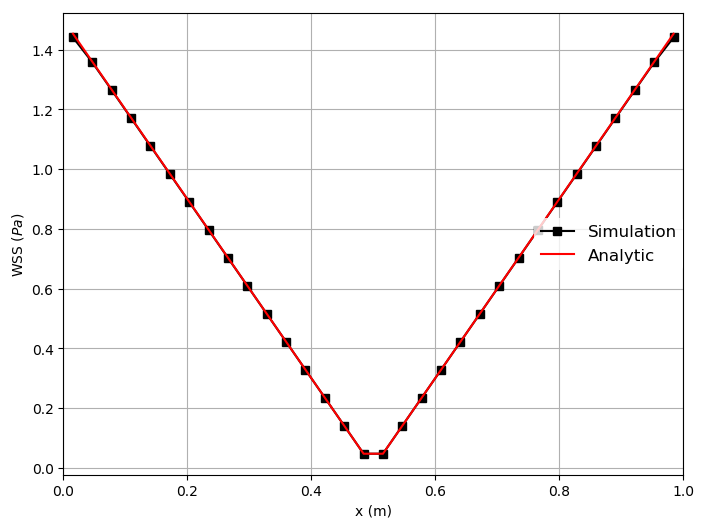Poisueille flow in a channel 2D
Navigate: ← Test case channel 2D
Poisueille flow in a channel 2D using hrrBGK collision scheme
In this example, we will investigate the Poiseuille flow in a plain 2D channel using the hybrid recursive regularized bgk (hrrBGK) collision scheme with a fourth order regularization.
This collision scheme is called as below in the identify table. relaxation = 'hrr_bgk'
The fluid table in musubi.lua should include the following --! [Fluid] fluid = { kinematic_viscosity = nu_phy, hrr_sigma = 0.99 -- default = 0.98 } --! [Fluid]
The sigma has a default value of 0.98 which can be overwritten from input. This represents a blending coefficient, therefore must be greater equal than 0.0 and lower equal than 1.0. A value of 0.00 reverts the HRR to the PRR scheme. A value of 1.0 reverts the HRR into the RR scheme. Any value in between is a blended scheme. For non dissipative runs, try to stay closer to 0.98. The RR scheme dissipates less than the PRR scheme.
A detailed description of test case can be found in the parent directory Description of test case channel 2D.
Generating mesh
Define geometry information
Define spatial objects
Running simulation
Define flow parametes
Define collision parameter
Define boundary condition
Post-processing
Here are the results from the simulation. To create them, double the number of elements in height (nHeight=32) in seeder.lua.
Velocity along the height of the channel:

Pressure across the length of the channel:

Wall shear stress along the height of the channel:

To create these plots, run python plot_track.py to create the plots. Before running the plot script, open 'plot_track.py' and update path to Gleaner script in 'glrPath'. Download Gleaner script using hg clone https://geb.sts.nt.uni-siegen.de/hg/gleaner